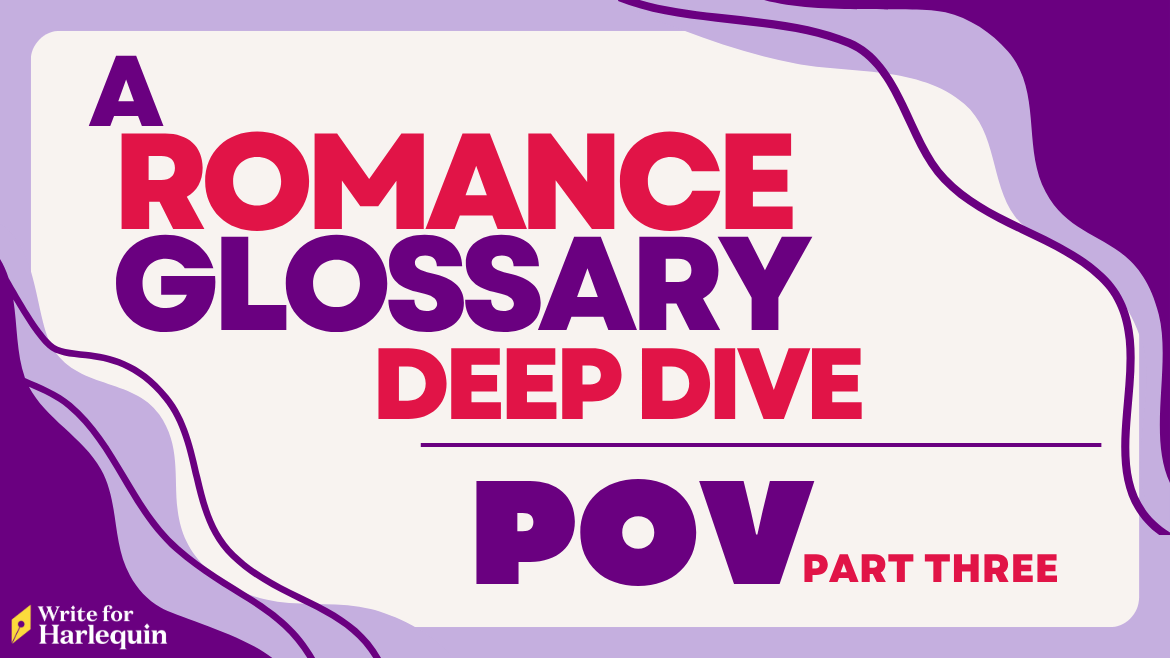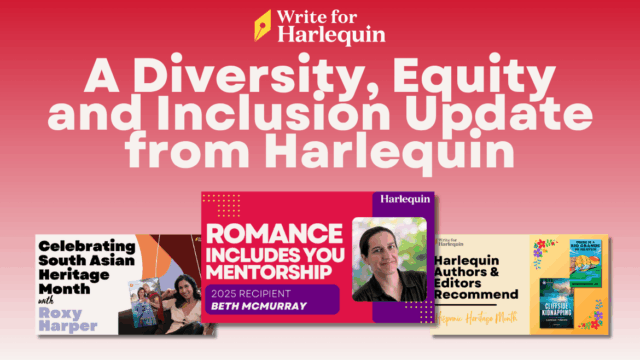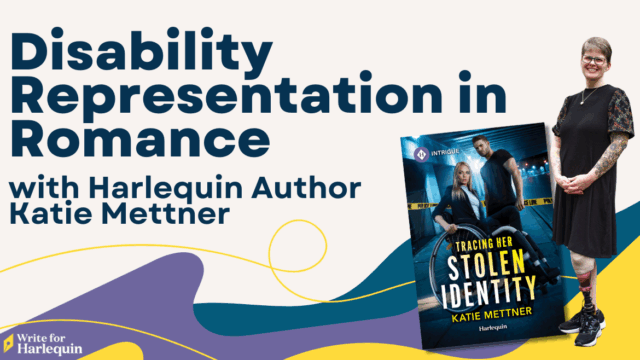
By Editor Emma Cole
If you’re writing, you’re already using POV, or point of view, even if you’re not conscious of which POV you’re writing. The voice and narration of your story can vary widely depending on what kind of story you’re trying to tell, and we have some great information in our Romance Glossary and in previous posts about the different kinds of POV you can write. What I want to focus on here is dual POV: the act of writing the romance between your characters from both of their points of view (if you’re writing more than two people in your romance, then you’d be using triple or quadruple POV, and so on).
For category romance novels, the slightly shorter word count means that writers have less time to build the central love story. One of the tricks that can help amp up the emotional connection between your characters is to allow the readers access to the thoughts and feelings of both participants in the romance. So how do you structure a dual POV? Here are some options that work well in Harlequin’s romance novels.
Alternating Chapters

This form of writing dual POV is very common in trade publishing. Many writers focus on a single character’s perspective throughout an entire chapter, only allowing the reader into the mind of one person as they navigate a specific element of the story. Sometimes, authors will tell the same story beat through each character’s POV, which lets readers experience a more complex picture of the events that are unfolding throughout. Writers should be mindful, however, of keeping the story fresh. It can be tricky to create a full, well-rounded story without feeling too repetitive if you’re expecting your reader to come back to the same plot point multiple times. But when done effectively, authors can reveal important information that was previously hidden by only allowing one of the characters to notice or experience something that ends up being vital to the narrative.
One big consideration for category romance: the more chapters you have in your book, the longer the page count (even if you’re within the word count requirements for the series you’re writing for). This is because each time you change chapters, you’re adding another page break, and those breaks can add up to multiple extra pages. Sometimes we need to combine chapters in order to fit the book into our required page count for printing purposes. So, what do you do when you can’t simply alternate chapters?
Alternating Within a Chapter
The vast majority of Harlequin novels use multiple POVs within each chapter of the book. Instead of breaking up POVs by chapter, we simply insert what’s called a Time Break. This small icon indicates that either some time has passed, or we’re switching to someone else’s perspective. These breaks effectively create several mini chapters within each larger chapter, and can help you avoid the pitfall of having to rehash an event that readers have already seen. Your alternating sections can be just a paragraph or two, though we usually reserve those short POV sections for the villain’s perspective in a romantic suspense novel or a big cliffhanger. Typically, each section is a bit longer, allowing a character to fully process what they’re thinking or feeling about a particular moment in the story, before showing the second main character reacting to what the first character has said or done. In alternating POVs, you’re moving the story along but at the same time you’re building the romance, by continuing to deepen the characters’ emotional reactions to each other and showing the evolution of the love story in real time.
What to Watch Out For

In addition to the possible pitfalls mentioned here, the biggest concern in a dual POV story is head hopping. That’s when you start out writing from one character’s perspective, but in the middle of that section (or the middle of the sentence!) the perspective shifts to the other character. This can be quite disorienting for readers, especially when you’re writing a very interior POV, as is frequently the case in romance novels. Here’s an example of head hopping so you can see what I mean.
This is a scene between Joe and Delilah, and we’re currently in Joe’s POV:
Joe stared at Delilah in disbelief. How could she be so clueless?
“Are you kidding me?” Joe shouted. “I thought we had something special.”
Delilah laughed, and her cavalier response cut Joe to the quick.
“Special? We didn’t even have something memorable.”
Delilah turned and stalked off, hiding her face from her former lover and she left him standing on the platform. She was hurt and angry, but she couldn’t let Joe see her cry.
As you can see here, we start out in Joe’s POV, and we can tell he’s angry with Delilah. After he speaks, we’re still in his POV, because the next sentence describes how Delilah’s reply makes him feel (it cuts him to the quick). But after we read Delilah’s dialogue, the POV has shifted to Delilah. Joe can’t know why she’s hiding her face, only that she stalks away from him. And he definitely wouldn’t know how she was feeling, because we’re only supposed to be in Joe’s head.
Here’s how we can rewrite this scene to remain in Joe’s POV:
Joe stared at Delilah in disbelief. How could she be so clueless?
“Are you kidding me?” Joe shouted. “I thought we had something special.”
Delilah laughed, and her cavalier response cut Joe to the quick.
“Special? We didn’t even have something memorable.”
Delilah turned and stalked off the platform. Joe watched her leave, too upset to follow. He thought he heard a stifled sob as she disappeared into the crowd and thought maybe she was hurting too, but right now he didn’t care.
If you wanted to get a better sense of Delilah’s emotions in that scene, you’d insert a time break and maybe pick up the scene from Delilah’s line of dialogue. That way, you can show readers what Delilah is thinking and move on in her POV, getting to the next scene of the story.
Hopefully this deep dive into dual POV will help you on your romance writing journey. Make sure to check out the rest of our series of posts for more tips and tricks on crafting believable, swoonworthy romance stories.
Looking for more on POV? Check out the rest of our Romance Glossary Deep Dives on Point of View:




